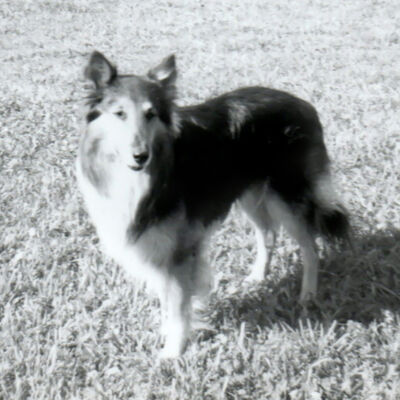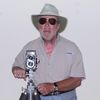What is JPEG??? (simplified)
Feb 1, 2023 17:36:34 #
shieldsadvert wrote:
Interesting article although a little over my head but the question remains since my camera's dynamic range is 11 stops, and that is the range of jpegs, what would be gained by shooting in RAW?
Thanks
Thanks
JPEG’s are capable of displaying 16,777,216 colors. A 14 bit raw file can display over 4 trillion colors. Now 16 million sounds like a lot and for viewing it’s usually plenty but when you start processing is where the difference becomes apparent. The dynamic range isn’t the issue. That only determines the overall range from dark to light. The bit depth is what determines how much detail you can get out of those light and dark areas.
Feb 1, 2023 19:43:16 #
davyboy
Loc: Anoka Mn.
CHG_CANON wrote:
Shooting in JPEG is nothing to be ashamed of, but do it in private and wash your hands afterwards.
Will I go blind?
Feb 1, 2023 23:01:52 #
rlv567 wrote:
I have excerpted a few salient points from a very ... (show quote)
Are you sure you didn't over-simplify? . . . .

Feb 1, 2023 23:07:33 #
CHG_CANON wrote:
Shooting in JPEG is nothing to be ashamed of, but do it in private and wash your hands afterwards.
And don't forget to disinfect!!! . . .

Feb 2, 2023 08:12:23 #
LEWHITE7747 wrote:
Jared Polin has started using JPEG's as they are now (with the new algorithms) as good as RAW files.
Have you looked at his t-shirt?
Feb 2, 2023 09:42:23 #
JohnR wrote:
Film, digital, RAW, Jpeg, SOOC, 35mm, APSC, M4/3, ... (show quote)
Ther more you understand how things work, the better off you are. Making decisions on all you mentioned is best done if you have a somewhat accurate knowledge base to make decisions.
Knowledge can be obtained in a few ways. Experience is one and discussing things in a forum is another. I'm of course a crusty old curmudgeon. But I've questioned EVERYTHING my entire life. Nothing is ever "settled" and can subject to investigation and further learning.
Feb 2, 2023 09:43:43 #
jlg1000 wrote:
Have you looked at his t-shirt?
BY DEFINITION, JPEG files NEVER can be as good as RAW - though they may be good enough for some. For the very best results, it has to be RAW plus the best post processing software.
Loren - in Beautiful Baguio City
Feb 2, 2023 09:47:59 #
Feb 2, 2023 10:06:24 #
LEWHITE7747 wrote:
Jared Polin has started using JPEG's as they are now (with the new algorithms) as good as RAW files.
A) watch his t-shirt, where does it read "I SHOOR JPEG NOW"
B) what does it mean "as good as" ?
I've got a broken wrench which I use as a door stopper.
I could say "I started to use wrenches as they are now (with the new modifications) as good as door stoppers.
Feb 2, 2023 11:07:13 #
SuperflyTNT wrote:
JPEG’s are capable of displaying 16,777,216 colors. A 14 bit raw file can display over 4 trillion colors. Now 16 million sounds like a lot and for viewing it’s usually plenty but when you start processing is where the difference becomes apparent. The dynamic range isn’t the issue. That only determines the overall range from dark to light. The bit depth is what determines how much detail you can get out of those light and dark areas.
Well, there are supposedly 18 decillion varieties of color (around and infinite number), and your camera and human eye can only see a small number or them, raw or jpg. The raw photo only 16 million, a measly amount, and the human eye at best see 10 million colors.
Theoretically,(on paper,) a RAW file may superior to a JPEG file the question being is that extra information necessary for your intended results. In other words, if you can't see see it, is shooting RAW really any advantage?
Nothing wrong with using raw, other than most non-editing, non-artistic experts will often produce WORSE results than the camera provides them, and 99% of the time raw is completely unnecessary for getting a good picture.
The other main issue is can you edit a JPG image? Of course you can. You need to know a jpg image can easily give you a full stop above and below correct exposure. Normally, anyone with a modern digital camera can, with no effort, pull that off. I was doing it 50 years ago with old SLR's that had no automation and slide film that had zero tolerance and couldn't even be edited, and I had little clue what I was doing. You would have to be exceptionally inept at photography not to get within 2 f stops today, and knowing when this doesn't cut it is pretty darn simple, and raw is only one solution, there are others for those instances.
The reason there are BILLIONS of fantastic JPG captures floating around, is because normally, jpg is more than adequate for taking most pictures, and editing them with out fooling around with RAW.
RAW is the last thing that makes for a good picture.

Feb 2, 2023 11:25:00 #
rlv567 wrote:
BY DEFINITION, JPEG files NEVER can be as good as RAW - though they may be good enough for some. For the very best results, it has to be RAW plus the best post processing software.
Loren - in Beautiful Baguio City
Loren - in Beautiful Baguio City
Well that's plain and simply FALSE.
JPG is often superior to RAW, particularly after non-experts and non-artists fire up the raw editor and start fooling around.
Just because RAW contains more information, and has the potential for superior results, does NOT mean it's going to be needed, nor that you're capable of actually pulling it off. 99% of the time you can EASILY get the same or better results editing a jpg image.
Just perusing the hogger images that sport the "I Shoot Raw" T-shirts will quickly show their images are no better and often worse than those shooting and editing jpg images. If you look closer, as far as image quality is concerned (not content) you will find over and over and over that the majority of knock your socks off, curl your toes images are shot with high end camera's and lenses. Raw is almost NEVER an issue.
Feb 2, 2023 11:44:55 #
BigDaddy wrote:
The reason there are BILLIONS of fantastic JPG captures floating around, is because normally, jpg is more than adequate for taking most pictures, and editing them with out fooling around with RAW.
The reason there are BILLIONS of fantastic JPG captures floating around, is because normally, jpg is more than adequate for taking most pictures, and editing them with out fooling around with RAW.
The reasons there are BILLIONS of fantastic JPG captures floating around are:
....a) Were taken by the dezillions of mobile devices, such as phones, GO PROs and the like
....b) Are final edited and exported RAW's
or c) Were taken by very competent photographers who like to fiddle with flimsy in camera controls
Feb 2, 2023 11:49:46 #
BigDaddy wrote:
Well that's plain and simply FALSE. br JPG is oft... (show quote)
Why do you choose to ignore the FACT that the CAPABILITY of image production of RAW IS superior to JPEG. It should be obvious to you that I am not discussing the results obtained by those who do not know what they are doing - with either! I certainly will agree that JPEG may produce acceptable results in the hands of someone ignorant of valid processing while RAW will not, but that is not my concern! I also have agreed that JPEG can be quite satisfactory for many, and under the right circumstances result in quality pictures. I fail to understand the need of some to make this an either/or situation, where one is the ONLY way to go! If I shoot only RAW, it certainly is very easy for me to get a JPEG if needed, and I have no processing limitations.
Loren - in Beautiful Baguio City
Feb 2, 2023 12:02:29 #
CHG_CANON wrote:
Shooting in JPEG is nothing to be ashamed of, but do it in private and wash your hands afterwards.
LOL
Feb 2, 2023 12:07:43 #
The saddest thing is that this JPEG vs RAW endless discussion should't even exist.
Believe me, I know about JPEGs... I have even written code to handle those horrible files.
The fact is that JPEG (ISO TC 97 / ISO/IEC 10918-1:1994) is *horribly hopelessly obsolete* It is so bad that it doesn't even have the possibility of data extension (just as the original audio CD) ... only different resolutions. Did you know that the original draft was intended for *fixed* 640x480 resolution only suitable for IBM VGA displays? Did you know that it was pushed by IBM, not because it was good, but to obliterate competing card/monitor assemblies?
The problem is that it was the lesser evil in a time where kilobits per second mattered, so it was widely adopted. Other (older) formats were even worse.
Immediately after the initial publication of ISO TC 97 in 1992, far better standards where published which were capable of variable bit depth, big color spaces, better compression, less artifacts, etc. etc. etc.
Take for example ISO/IEC 15444 which allows for lossless/lossy compression, big color depth, etc.
Take JPG XL, or even Apple's HEIC.
But they were never fully adopted because everybody was on the JPEG vagon, and JPEG was ... aahhh, good enough. And adopting a new standard costs *TONS* of money.
If some of the later standards had been adopted, modern SOOCs could really encode the full sensor readout, so the RAW patchy solution wouldn't be needed.
Yes I shoot exclusively RAW because I edit every photo, but from an engineering point of view, I am very aware that it is only a workaround to the poooooor oooooold JPG standard, which should belong to the history books, together with the floppy disk, Lotus 1-2-3 and the Sinclair Spectrum.
Believe me, I know about JPEGs... I have even written code to handle those horrible files.
The fact is that JPEG (ISO TC 97 / ISO/IEC 10918-1:1994) is *horribly hopelessly obsolete* It is so bad that it doesn't even have the possibility of data extension (just as the original audio CD) ... only different resolutions. Did you know that the original draft was intended for *fixed* 640x480 resolution only suitable for IBM VGA displays? Did you know that it was pushed by IBM, not because it was good, but to obliterate competing card/monitor assemblies?
The problem is that it was the lesser evil in a time where kilobits per second mattered, so it was widely adopted. Other (older) formats were even worse.
Immediately after the initial publication of ISO TC 97 in 1992, far better standards where published which were capable of variable bit depth, big color spaces, better compression, less artifacts, etc. etc. etc.
Take for example ISO/IEC 15444 which allows for lossless/lossy compression, big color depth, etc.
Take JPG XL, or even Apple's HEIC.
But they were never fully adopted because everybody was on the JPEG vagon, and JPEG was ... aahhh, good enough. And adopting a new standard costs *TONS* of money.
If some of the later standards had been adopted, modern SOOCs could really encode the full sensor readout, so the RAW patchy solution wouldn't be needed.
Yes I shoot exclusively RAW because I edit every photo, but from an engineering point of view, I am very aware that it is only a workaround to the poooooor oooooold JPG standard, which should belong to the history books, together with the floppy disk, Lotus 1-2-3 and the Sinclair Spectrum.
If you want to reply, then register here. Registration is free and your account is created instantly, so you can post right away.






